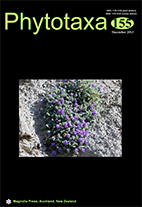Abstract
A new species Oxytropis sanjappae is described and illustrated from the Himalaya in India. The new species is widely scattered from Losar to Kaza in Lahul-Spiti region of Himachal Pradesh State. The relationship of the species has been discussed with O. cachemiriana and O. tatarica. The new species differs in having hairs very dense, silky and white, stems generally absent or quite reduced, racemes capitate, globose-ovoid or oblong, many-flowered, dense and elongating in infruitescence, calyx teeth distinctly longer than tube, corolla light purplish pink and almost equal to calyx, wing petals obtuse at apex, mucro of the keel petal ca. 1 mm long and pods comparatively larger in size. A taxonomic key to the all 18 species of the genus occurring in India including new ones has been provided for the first time. In addition, the ecological studies related with the frequency, density, basal cover and importance value index (IVI) have also been carried out to know the conservation status of the species in the Himalaya.

